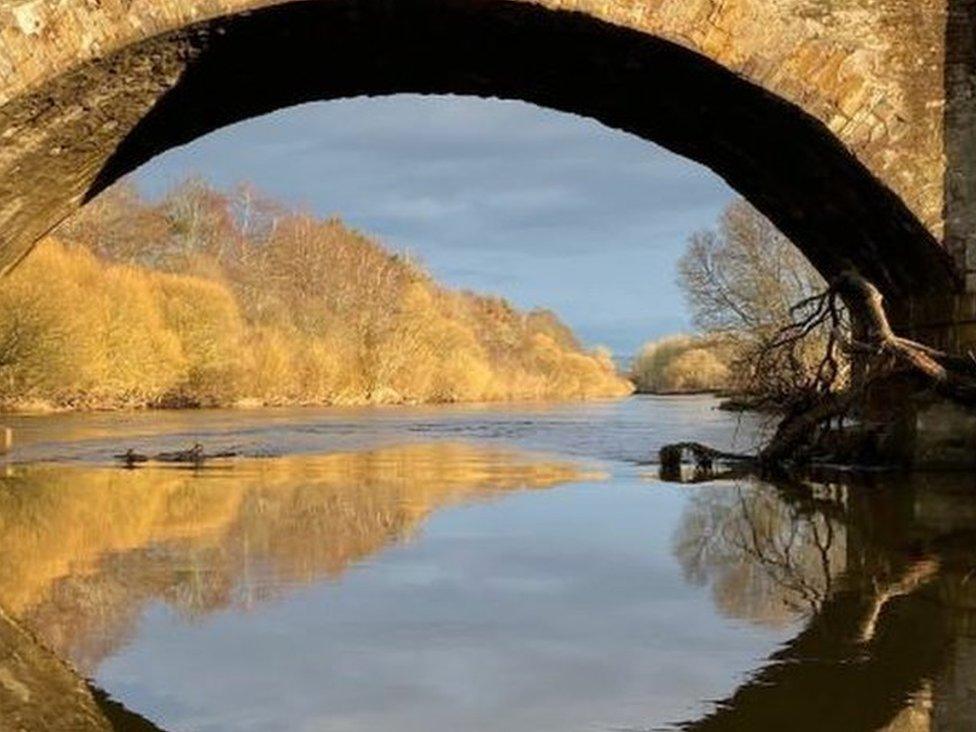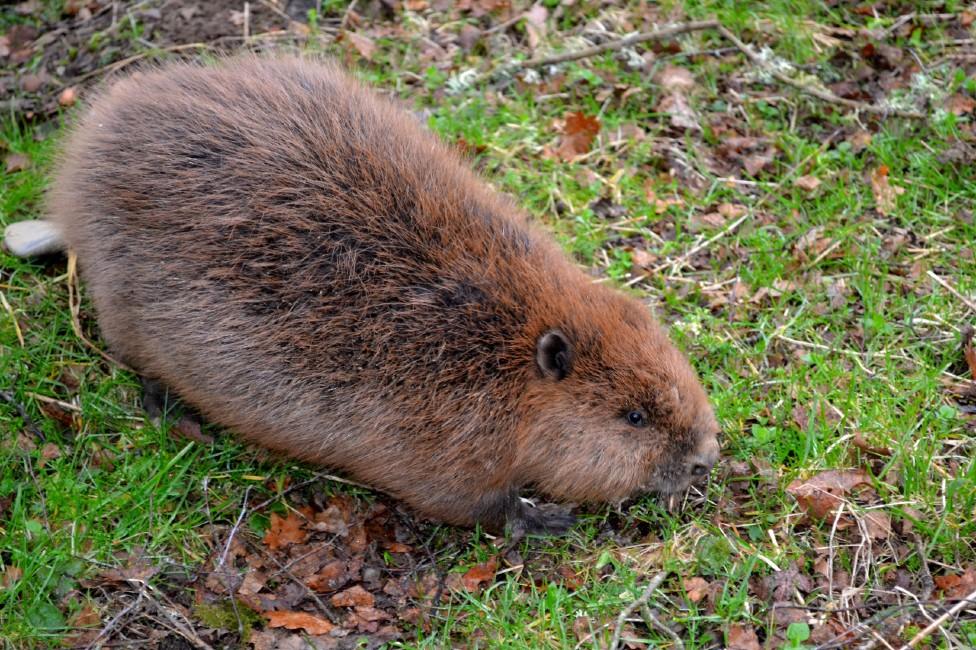Perth becomes first UK city centre with resident beavers
- Published

Beavers and their dams were spotted during a canoe survey
Perth has become the first UK city to see resident urban beavers for hundreds of years, with the mammals establishing a "strong presence" there.
A new survey has found evidence of beaver activity on the River Tay, including in the centre of Perth.
Signs of fresh activity were also seen on Moncreiffe Island and along the river at the North Inch.
Beavers were hunted to extinction in Britain in the 16th Century for their fur, meat, and scent glands.
The animals were reintroduced in Scotland in 2009 and are valued for their impact on ecosystems and abilities as "natural engineers".
A similar programme to reintroduce the animals is currently under way across England and Wales.
However some landowners have raised concerns about the damage caused as they build dams.
Surveyors said there has been a beaver territory on the Tay at Perth since at least 2017.
They said there was now "even more evidence" of their increased presence this year.

Increased beaver activity has been spotted in the area this year
Denise Reed, NatureScot's Tayside and Grampian area manager, said: "The city of Perth already has an abundance of wildlife on its doorstep and we're excited to hear about the beavers in Perth.
"It can lay claim to being the first city in the UK to have its own resident beaver families."
The NatureScot survey was conducted by Exeter University and is the first to be conducted since beavers gained protected status in Scotland in May 2019.
NatureScot, formerly Scottish Natural Heritage, external, said beavers had established territories in many European urban areas with suitable habitat, including cities such as Berne, Munich and Vienna.
The current survey covers the Tay and the surrounding river catchments, including the Forth and river systems in the Loch Lomond and Trossachs National Park.